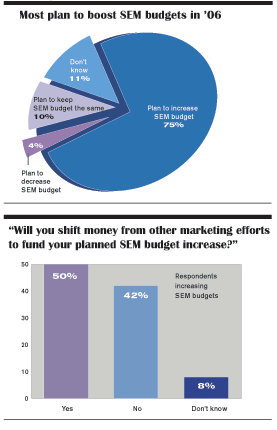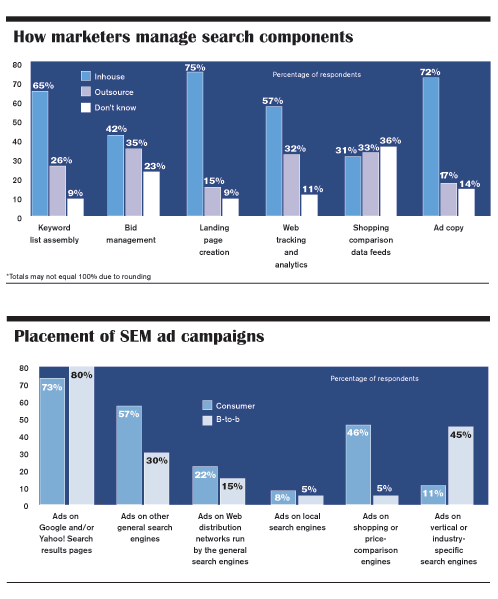Managing the various components of an SEM campaign tends to be an inside job, according to survey participants. Of those with SEM campaigns or planning to launch them, 75% said they manage landing-page creation inhouse, 72% manage their own ad copy, 65% have staffers assemble keyword lists, 57% do their own Web tracking and analytics. But only 42% keep bid management inhouse, and just 31% of respondents said shopping comparison data feeds were handled inhouse, with 33% outsourcing that work, and the remainder unsure of where the work was done.
But just because the majority of these components were managed inhouse doesn’t mean merchants have a bustling SEM staff. Rather, just 27% had a dedicated SEM staff, and few planned to hire one.
Google and Yahoo! Search continued to be the top ad placement pick for merchants running pay-per-click campaigns. Three-quarters of respondents placed ad campaigns with the two search giants. More than half of consumer merchants (57%) used other general search engines such as MSN Search, Ask, and AOL, and 46% used shopping or price-comparison engines. Not surprising, b-to-b merchants’ second-choice location for placing pay-per-click ads was vertical or industry-specific search engines, with 45% of business respondents using them.
Respondents were most interested in using a mix of specific and generic keywords in their paid-search campaigns; 75% said they did this. At a close second, 73% aimed to get ads on the first search results page in their product category, and 70% periodically optimized their site to incorporate keywords that work well in paid search.
When evaluating the return on investment of search ads, 64% did not factor in offline conversions such as in-store, catalog, or phone sales. Why not? The plurality (38%) blamed a lack of IT expertise, while 21% said the reason was an overall lack of manpower.


